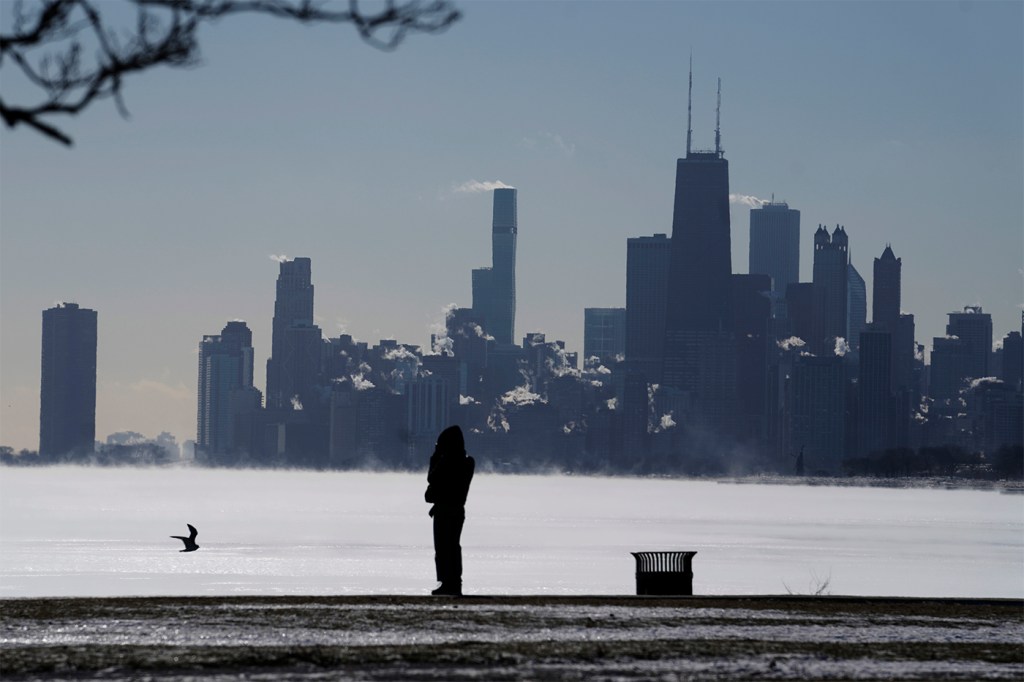How to avoid hypothermia and frostbite as Arctic temps chill the US

Subfreezing temperatures will continue to plague much of the country this week, putting outdoor sports enthusiasts, football fans, unsheltered people and stranded motorists at increased risk of hypothermia and frostbite.
At least five people in the U.S. have died of suspected hypothermia in recent days, according to the Associated Press.
Acute care nurse practitioner Stephen Wood, program director of Northeastern’s Extreme Medicine certificate program, answered questions about what hypothermia is, what it does to the body, how to prevent it — and how hypothermia differs from frostbite.
The answers have been edited for brevity.
What is hypothermia?
Hypothermia occurs when the body is losing heat faster than it can produce it and your core body temperature starts to drop.
Our bodies like to be within a fairly narrow range of temperature. We think of 98.6 as the norm, but that temperature can range from 96 to 100 degrees.
A drop below 90 degrees is considered to be hypothermia. Severe hypothermia is anything below 82 degrees Fahrenheit for core body temperature.
Certain enzymes don’t work. Certain hormones and neurotransmitters stop working. Our bodies start to become acidic, developing what is called metabolic acidosis and stop breaking down glucose for energy.
When you have cold plus acidosis, organs and bodily systems start to fail. With severe hypothermia, your metabolism slows to a near stop. Your brain isn’t utilizing any energy.
People actually have survived at those temperatures for hours. We’ve seen it with cold water drownings.
For hypothermia victims who are found in time, the warming-up period is critical. Their heart is particularly vulnerable to going into abnormal rhythms. We have to be gentle about handling them and closely monitor their electrolytes.
Featured Posts
Why do some hypothermia victims remove clothing?
The phenomenon is called paradoxical undressing and we see it generally in people with moderate hypothermia.
Blood starts to shunt from people’s periphery — arms and legs — to their core. The blood tricks people’s thermoregulatory system into thinking they are warm so they start to shed their clothing.
With hypothermia, people start to get confused and make bad decisions. It definitely contributes to paradoxical undressing as well.
Your brain is one of the organs most sensitive to temperature. One of the very early signs of hypothermia is confusion.
I’ve seen paradoxical undressing a couple of times. I was on a trail and found someone’s hat, jacket and gloves and found the person sitting under a tree with only a T-shirt on.
When does cold weather get dangerous?
When the temperature outdoors is under 40 degrees you can see hypothermia develop in as little as 30 minutes.
Temperature plays a role, but wind chill and moisture do as well.
With wind chill, you’re losing body heat through convection. The windy currents of air transfer heat from your body to the colder air.
If your skin is wet, you’ll lose heat through conduction. If you become sweaty during a hike and sit on the cold ground in the wind, that’s a setup for disaster.
Is there a connection with frostbite?
Hypothermia relates to the body’s core temperature. Frostbite occurs when your tissue freezes. The conditions often go together.
Just like with burns, you can have varying degrees of frostbite depending on how deeply it goes into the tissues. In third-degree cases cells freeze and form ice crystals and die. In severe cases, you can have tissue that’s completely dead and requires amputation.

How can you protect yourself and loved ones?
It really comes down to being prepared for the cold and dressing appropriately. Cover exposed skin — wear a hat, wear layered clothing, especially if you are going to be active so you can take clothing on and off.
A really good wind shell over a warm jacket can prevent heat loss as well. I’ll wear my nice puffy jacket on cold winter hikes, but I’ll have it under a wind shell.
You need the right clothing that wicks moisture away from you, which means avoiding cotton. Cotton is probably the worst choice when it’s cold.
Cotton is a natural fiber that absorbs water. Once it absorbs water, it doesn’t function very well because of the way fibers are arranged.
On the other hand, wool fibers are arranged in a way that creates air pockets. Wool, especially merino wool, can keep you warm even when it’s wet.
Mittens versus gloves?
Old-school mountaineering people still have a lot of wool products. There are a lot of synthetic products including polypropylene and Goretex that are probably better at wicking moisture away from your skin and at blocking wind.
I still use a lot of wool products myself but my Goretex gloves come out when it’s really cold.
One reason I really like mittens is because you can ball your hand up inside of them. Bringing all your fingers into proximity keeps them warm.
When it’s really cold, outdoors enthusiasts wear an overmitten with gloves underneath. They can take the mitten off when they need the dexterity of the glove.
And remember to keep your feet warm. We recommend wearing a polypropylene or silk sock under wool socks to keep them warm and dry. You can also put deodorant and foot powder on your feet to get them dry.
What should you wear at a game?
The smart people at the football game in Kansas City had a hat and hood and wind shell and layers of clothing to keep them warm.
I saw some crazy people without a shirt on. Get yourself on camera and then go back inside and get some clothes.
Drink plenty of hot liquids and go inside every once in a while to make sure you are staying warm. Monitor each other to make sure you are OK.
Alcohol, opiates and heart and blood pressure medications increase the risk of hypothermia, as does older age.
Know your limitations and don’t go into climates you are not prepared for. If you haven’t hiked before, don’t start with the White Mountains in the winter.
Remember to drink plenty of water and eat a lot of high carbohydrate foods to keep your energy levels up in cold environments.
What do you keep in your car?
I have a bag with a winter sleeping bag that’s good for negative 30 degrees. I have an emergency shelter, which is basically a tarp with a silver reflective side you can set up as a tent or wrap around you over the sleeping bag, burrito style.
I also have a dry bag with a change of clothes and some food. That might be a little much for some people, but I know I could survive at least overnight.
I have a pair of boots in the car, too. If I need them, I’ve got them.











